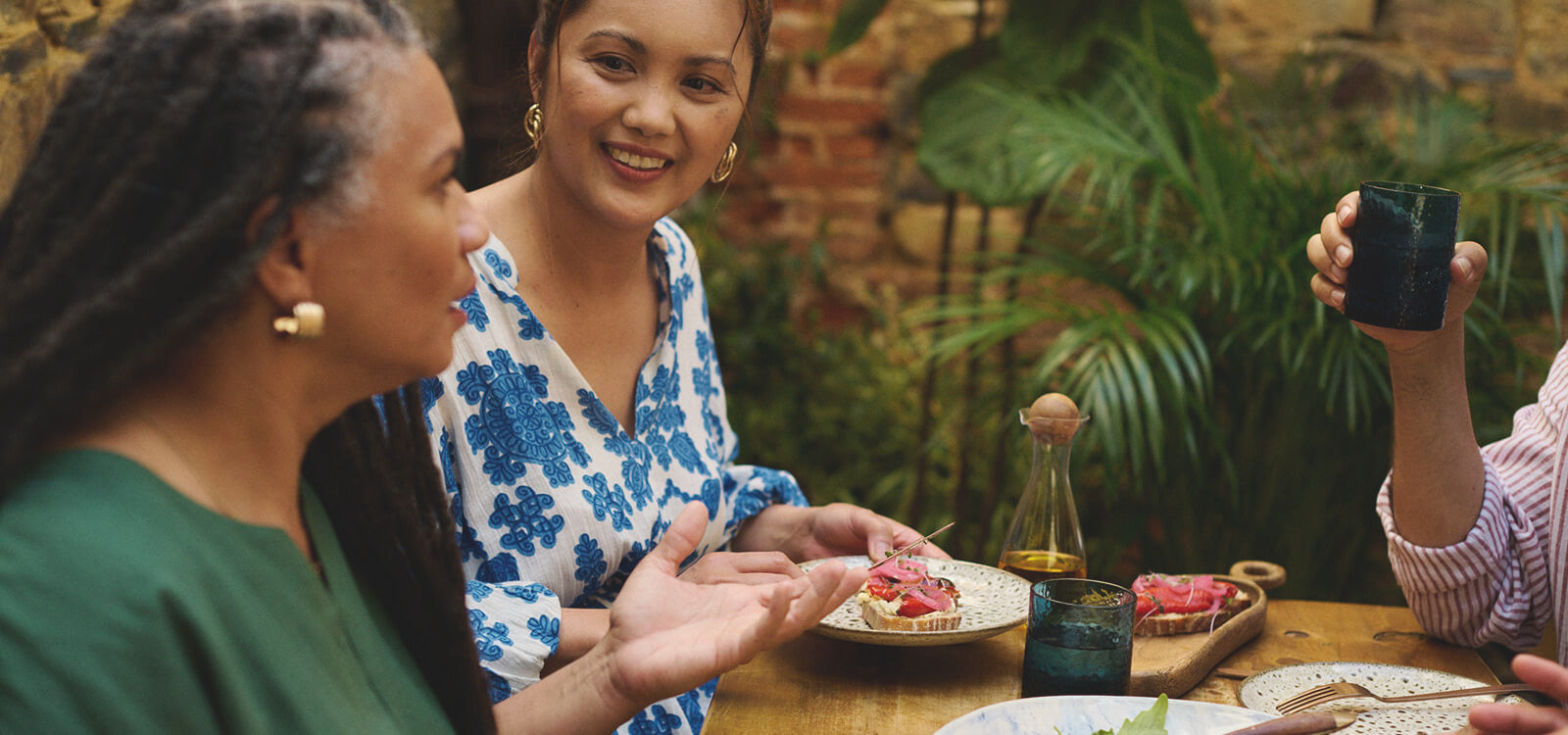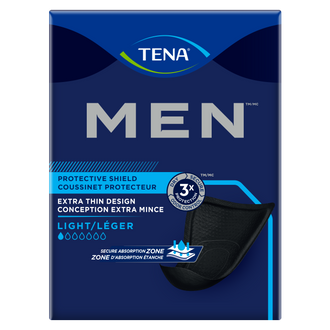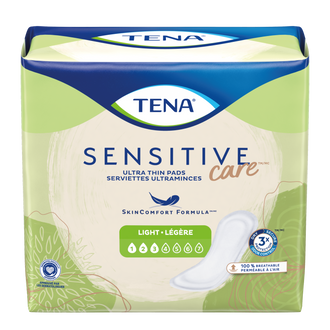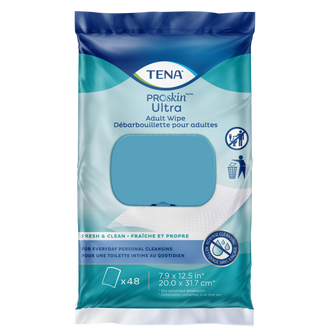Jul 22, 2024
While most of us can’t wait for the summer months with their sunny skies and warm temperatures to arrive, it's important to remember that extended exposure to excessive heat can be dangerous, especially for older adults.
In this article, we’ll chat about what heat and heat-related illnesses are, explore why heat is a bigger deal for older adults, and share practical strategies to keep these conditions at bay. Our goal is to equip you with the knowledge and tips needed to stay safe and hydrated during the warm months. Let’s dive in.
Why is Heat a Problem?
As we age, our bodies undergo changes that increase our vulnerability to heat-related risks.1 Understanding these shifts can help us older adults during warmer weather.
One major issue is that as we get older, our ability to regulate body temperature decreases.1 This can be influenced by medications or chronic conditions that affect how our bodies handle heat.1
For instance, older adults tend to sweat less, which is how our bodies cool down.2 Plus, older adults may not feel thirsty until they're already dehydrated, raising the risk of heat-related issues.2 These changes ramp up the risk of dehydration and heat-related illnesses like heat exhaustion and heat stroke.2
In 2021, seniors over 65 made up three-quarters of heat-related deaths in Washington.2 And, according to Climate Central, more than 80% of the roughly 12,000 annual heat-related deaths in the U.S. happen in people over 60.2 With temperatures rising and our population aging, it’s crucial to take these risks seriously to protect older adults from heat-related dangers.
Who is Most at Risk of Heat Exposure?
Extreme temperatures during heat waves can cause discomfort for everyone. But, when hot temperatures are combined with sun exposure, stagnant air conditions, and high levels of humidity, this can quickly escalate into serious health concerns.3
Certain groups are particularly vulnerable to heat-related illnesses.3 For example, outdoor workers and athletes face higher risks due to prolonged exposure to heat. Others, such as older adults, individuals with pre-existing health conditions, and those lacking proper resources to cope or recover, also face a greater risk of heat-related illnesses.3
Identifying these specific risk factors gives you a chance to take proactive steps to reduce exposure and vulnerability through adaptive actions.3
Elderly People and Extreme Heat
Why would older adults be at more risk from extreme temperatures than young people? Here are some reasons why:
Physiological Factors
- Temperature Regulation: As we get older, our bodies don’t handle heat as well.1 Seniors might sweat less and have thinner skin2, making it harder to stay cool.
- Chronic Health Conditions: Many older adults deal with conditions like heart disease or dementia, which can make it tougher to handle heat stress.3
Environmental Factors
- Living Situations: Seniors living alone or in places without good airflow like high rise structures are at higher risk.3
- Social Isolation: Older adults are more likely to be socially isolated, which means it takes longer to notice heat-related problems and get help.3
Signs of Heat Stress and Illness
If you become overheated, you are at a higher risk of heat-related illnesses, which can include1:
- Heat Exhaustion: Heat exhaustion occurs when the body struggles to stay cool.1 Symptoms typically include feeling thirsty, dizzy, weak, uncoordinated, or nauseated. You might sweat heavily and have cold, clammy skin along with a rapid pulse.1
- Heat Stroke: Heat stroke is a medical emergency. Signs can include fainting, changes in behavior, a high body temperature (over 104°F), dry skin, a strong and fast pulse, a slow and weak pulse, and stopping to sweat, even in hot conditions.1
Caregiver Tips
- Keep older adults hydrated with lots of water. Do not wait for the feeling of thirst to kick in before drinking water.1
- Keep the living space set to a comfortable temperature.1
- Check in regularly to see if they're cool enough by calling or chatting. Keep an ear out for trends or common worries.1
- Teach older adults and caregivers about signs of heat illnesses and when to find medical assistance.1
- If an older adult is dealing with incontinence, help the person choose clothing that keeps them cool and discreet while wearing protective products. Breathable fabrics and well-fitted garments can enhance their comfort and confidence throughout the day.
Signs of Heat-Related Illness
There are some health issues that might come up from prolonged overheating or unprotected sun exposure. Some signs of heat-related illness include:
Heat cramps are painful muscle spasms that can occur during intense exercise or physical activity in hot weather.4 They are often caused by dehydration and the loss of electrolytes through sweating.4 Signs include4:
- Muscle pain or spasms, usually in the legs, arms, or stomach.
- Sweating more than usual, and your skin may feel moist and cool.
- Fatigue or weakness.
Heat Exhaustion
Heat exhaustion is a sign that your body cannot keep itself cool for much longer and develops if heat cramps are untreated or if exposure to hot temperatures continues.4 Some signs of heat exhaustion include:4
- Heavy sweating.
- Weakness or fatigue.
- Dizziness or light-headedness.
- Nausea or vomiting.
- Cool, moist skin with goosebumps despite the heat.
- Rapid heartbeat.
Heat Stroke
Heat stroke is a life-threatening medical emergency and the most severe form of heat-related illness.1 It occurs when the body's temperature regulation fails, and body temperature rises to a dangerous level. Signs of heat stroke include1,4:
- High body temperature (above 103°F or 40°C).
- Confusion, agitation, or delirium.
- Slurred speech.
- Hot, dry skin (no sweating).
- Rapid, strong pulse.
- Loss of consciousness or seizures.
You need to get immediate medical attention for heat stroke to prevent serious complications or death.
Dehydration
Dehydration happens when the body loses more fluid than it takes in, leading to an imbalance in electrolytes.5 In hot weather, older adults are particularly vulnerable to dehydration due to a decreased sensation of thirst and drinking less liquids. Signs of dehydration include5:
- Dry or sticky mouth.
- Thirst.
- Decreased urine output or dark-colored urine.
- Dry, cool skin.
- Fatigue or weakness.
- Dizziness or light-headedness.
Sunburn
Sunburn, or sun exposure4, occurs when skin is overexposed to ultraviolet (UV) radiation from the sun. Older adults may be more susceptible to sunburn due to thinner and more fragile skin. Signs of sunburn include4:
- Red, painful skin that feels warm to the touch.
- Swelling of the affected area.
- Blisters in severe cases.
- Itching or peeling skin as it heals.
To prevent sunburn, make sure to use a broad-spectrum sunscreen with an SPF of 15 or higher, and reapply it as needed during the day, especially if you plan to be in the sun for a while.4
Heat Rash
Heat rash is a skin irritation that occurs from heavy sweating.1 It typically appears as small, red bumps or blisters and can cause itching or discomfort.1
Prompt recognition of these heat-related illnesses and appropriate action, such as moving to a cooler environment, hydrating, and seeking medical help, are crucial in effectively managing and treating these conditions during hot weather.
Tips for Managing in Hot Weather
Heat waves are becoming more frequent and intense than they used to in major cities across the United States.6 In fact, heat waves have increased steadily from an average of two per year in the 1960s to a staggering six per year in the past two decades.6
We know that older adults can have a tougher time dealing with heat because of changes in their bodies and pre-existing health issues.4
So, staying informed about weather forecasts and having a plan can make a big difference when dealing with heat waves. Here are some tips on how to plan for a heatwave.
Drink Lots of Water and Stay Hydrated
Research shows that people with urinary incontinence might end up not drinking enough water, which can make them more prone to dehydration.5 This makes staying hydrated even more important during a heatwave. Aim to drink at least eight glasses of water a day.5 Besides water, try diluted fruit juices and electrolyte drinks to keep hydrated when it is hot.4
Watch out for signs of dehydration like5:
- Dry mouth and lips
- Dark urine
- Dizziness
- Fatigue
Even if you don’t feel thirsty, keep sipping fluids regularly. Avoid alcohol or caffeinated drinks as they can dehydrate you.4
Keep Temperature Down and Keep Cool
Keeping your living space cool is key. Here are some handy tips:
- Use fans and air conditioning to keep the air circulating and cool.1
- If you don’t have air conditioning, think about staying with friends or relatives.1
- During the hottest parts of the day, stopping for an “air conditioning break” at a nearby mall or library may be helpful.1
- Close curtains or blinds during the hottest parts of the day to block out the sun.4
- Take cool showers or use damp cloths to cool down your body directly.1
Limit Strenuous Activities and Length of Exposure
Limit strenuous activities during peak heat hours4 (10 AM to 4 PM) to avoid heat-related illnesses.
- Schedule activities for the cooler parts of the day, like early morning or late evening.4
- Wear lightweight, loose-fitting clothes to help your body stay cool.1
- Wear a hat, take frequent breaks, and rest in the shade or a cool place.1
Limit Alcohol and Caffeine Intake
Alcohol can dehydrate you and mess with your body’s ability to regulate temperature. Caffeine can have a similar effect.7
- Drink alcohol and caffeinated beverages in moderation.
- Opt for cool, non-alcoholic, and non-caffeinated drinks like water, fruit juices or electrolyte drinks.4
Eat Lighter Meals to Help Keep Temperature Down
Heavy meals can make you feel warmer. During heatwaves, it’s better to eat light, easy-to-digest, water-rich foods.7
- Choose cool, hydrating foods like watermelon, cucumbers, and salads.
- Avoid hot, heavy meals that can increase body heat.
You Can Reduce the Risk of Heat-Related Illness
Managing heat effectively is important, especially for older adults more vulnerable to heat-related illnesses.
But, by remembering the tips discussed, older adults and their caregivers can stay safe and cool during hot weather, reducing the risk of heat-related health issues. Remember, a little preparation goes a long way towards staying comfortable and healthy when temperatures rise!
As a caregiver, you can rest assured knowing that TENA has your loved one or patient’s care and skin health covered with the caregiver range of underwear, briefs and pads.
The Best and Worst States for Your Skin Health in Summer Heat
While investigating heat management strategies, we also looked at search trends across the US related to summer heat conditions like “heat rash,” “sun allergy,” and “sunburn.” The analysis revealed the best and worst states for your skin’s health!
The image below highlights that:

- Hawaii tops the list for summer skin health concerns like heat rash, skin allergy and sunburn.
- Mississippi and Michigan followed closely behind in their quest for summer skin health information
- Despite being known for its large stretch of coastal terrain, California only ranks as the 21st state most concerned for its skin health according to search queries.
- Florida, a beach lovers paradise, comes in 8th overall with “sunburn” being the most s3earch term in the summer.
- Interestingly, not all top-ranking states are coastal. Landlocked states like Oklahoma (#5) and Minnesota (#10) also feature prominently in the top 10.
By following the heat management tips in this article, you should be able to manage your, and your skin’s hydration and health to stay comfortable in Summer.
References
1. CDC. ‘Older Adults and Extreme Heat’. 2021. Accessed 26 June 2024. Available from: https://www.cdc.gov/aging/emergency-preparedness/older-adults-extreme-heat/index.html
2. Harvard Health. ‘The Effects of Heat on Older Adults’. 2021. Accessed 26 June 2024. Available from: https://magazine.hms.harvard.edu/articles/effects-heat-older-adults
3. NIHHIS. ‘Who is most at risk to extreme heat’. N.d. Accessed 26 June 2024. Available from: https://www.heat.gov/pages/who-is-at-risk-to-extreme-heat
4. NIH. ‘Hot Weather Safety for Older Adults’. 2022. Accessed 26 June 2024. Available from: https://www.nia.nih.gov/health/safety/hot-weather-safety-older-adults
5. NIH. ‘Hydration Status in Older Adults: Current Knowledge and Future Challenges’. 2023. Accessed 26 June 2024. Available from: https://www.ncbi.nlm.nih.gov/pmc/articles/PMC10255140/
6. EPA.gov. ‘Climate Change Indicators: Heat Waves’. 2023. Accessed 27 June 2024. Available from: https://www.epa.gov/climate-indicators/climate-change-indicators-heat-waves
7. University of Alabama at Birmingham. ‘Discover the best foods to beat the heat wave’. 2023. Accessed 27 June 2024. Available from: https://www.uab.edu/news/youcanuse/item/13685-discover-the-best-foods-to-beat-the-heat-wave







